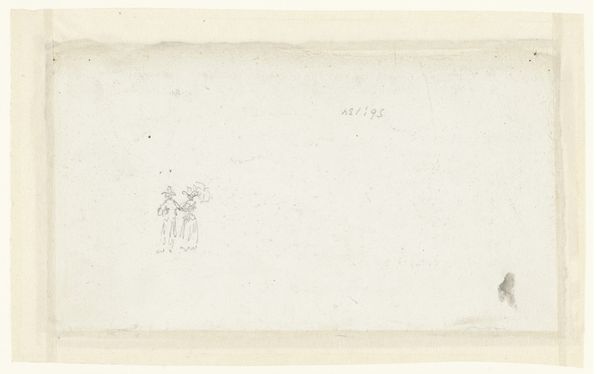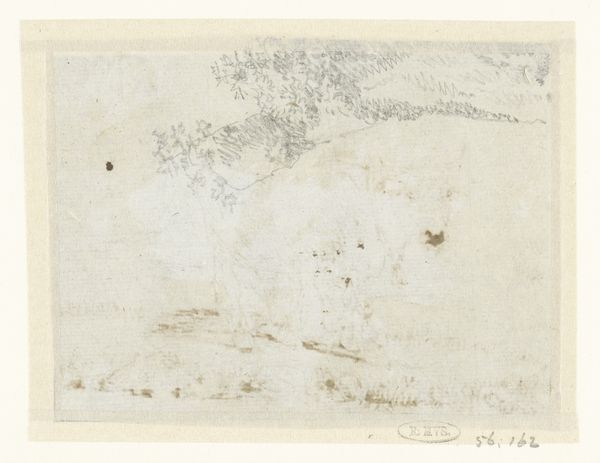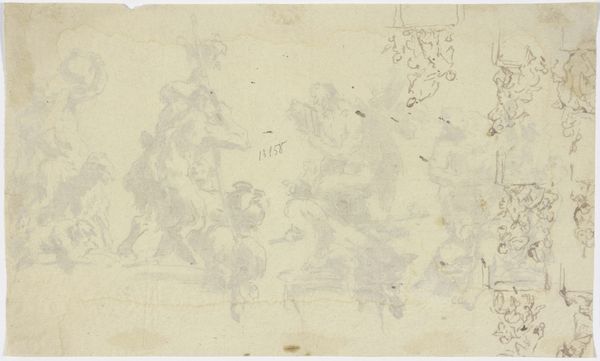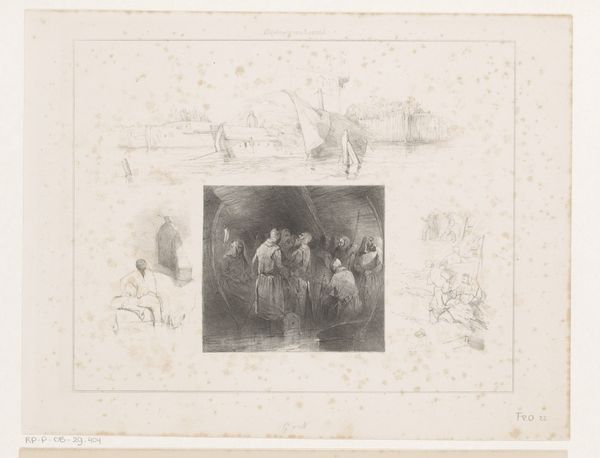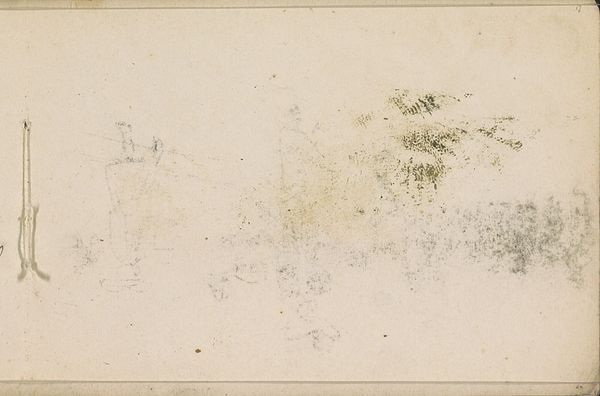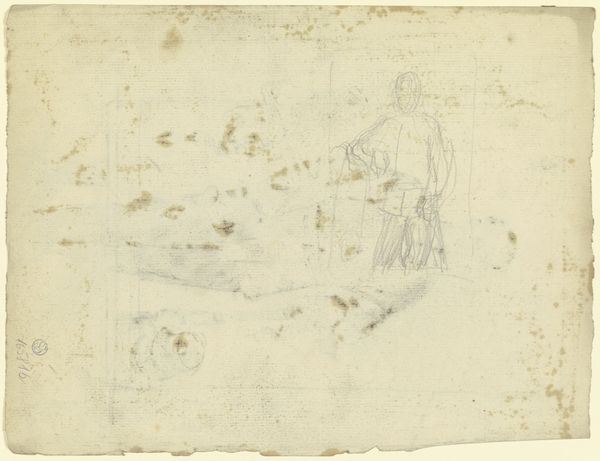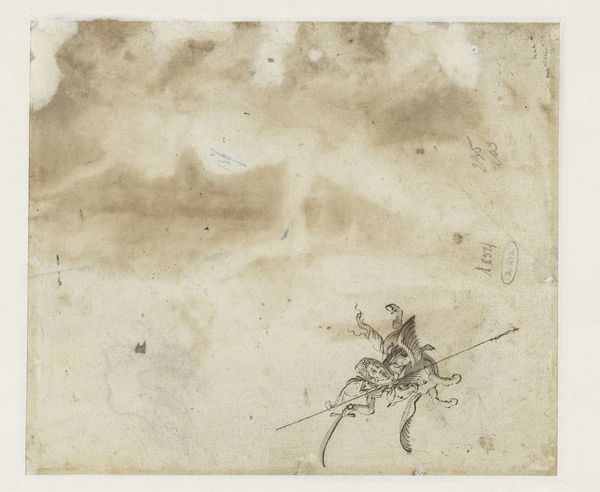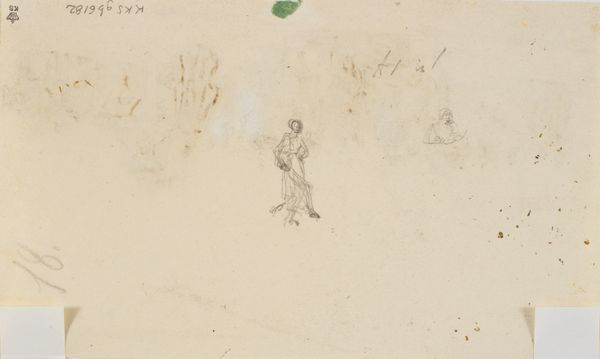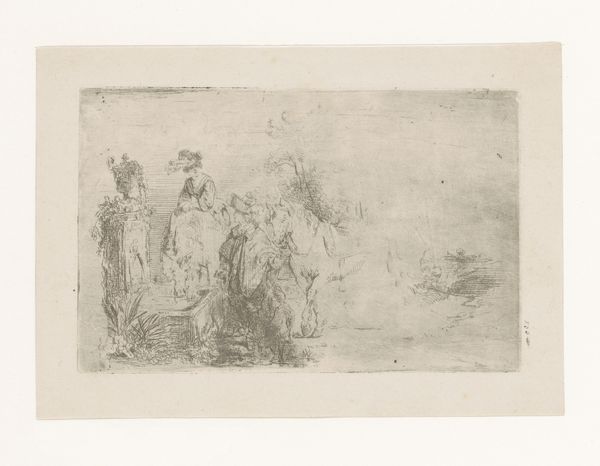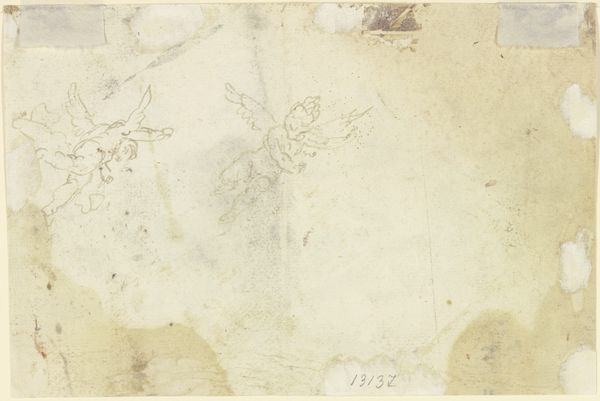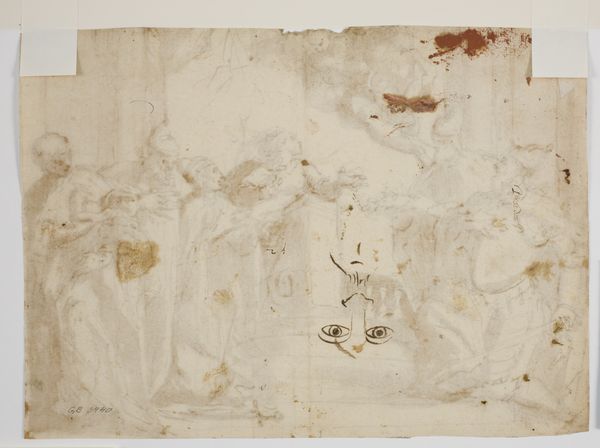
drawing, watercolor, ink
#
portrait
#
drawing
#
dutch-golden-age
#
landscape
#
etching
#
watercolor
#
ink
#
watercolour illustration
#
genre-painting
#
watercolor
Dimensions: height 333 mm, width 496 mm
Copyright: Rijks Museum: Open Domain
Editor: This is Jan Brandes' "Straattafereel Batavia," created between 1779 and 1785, using ink, watercolor, and etching. It's got a really muted, almost ghostly quality, a bunch of figures clustered together in what I assume is a street scene. What stands out to you? Curator: Well, it's less about what *stands* out and more about what *whispers*, don’t you think? The understated palette echoes the ephemeral nature of memory. Brandes isn’t just depicting a scene; he's capturing a feeling, an echo of a bustling street in Batavia. Notice how the ink outlines dance with the watercolor washes? Like stories blurring into dreams, fact folding into imagination. What story does it conjure in *your* mind's eye? Editor: It feels a bit like a colonial snapshot, but definitely softened, like looking at it through time and memory, as you said. But does this soften portrayal excuse what might have been a harsher reality of Dutch colonialism? Curator: An exquisite observation! That's exactly where the tension lies. Is Brandes offering a nostalgic gaze, or is he subtly critiquing the colonial presence? Does he intend to remember Batavia, as it was and he thinks it always will be? Perhaps it’s a question Brandes himself was grappling with. Art isn't always about answers; sometimes it's about the poignant questions we're afraid to ask. The ghosts whisper secrets of the era while refusing to outright state how we should remember it. Editor: I never really considered that historical art could be so much about questioning instead of telling. Thank you for enlightening me. Curator: The pleasure was entirely mine. I'm glad to leave with that lingering and rather delightful consideration.
Comments
No comments
Be the first to comment and join the conversation on the ultimate creative platform.
